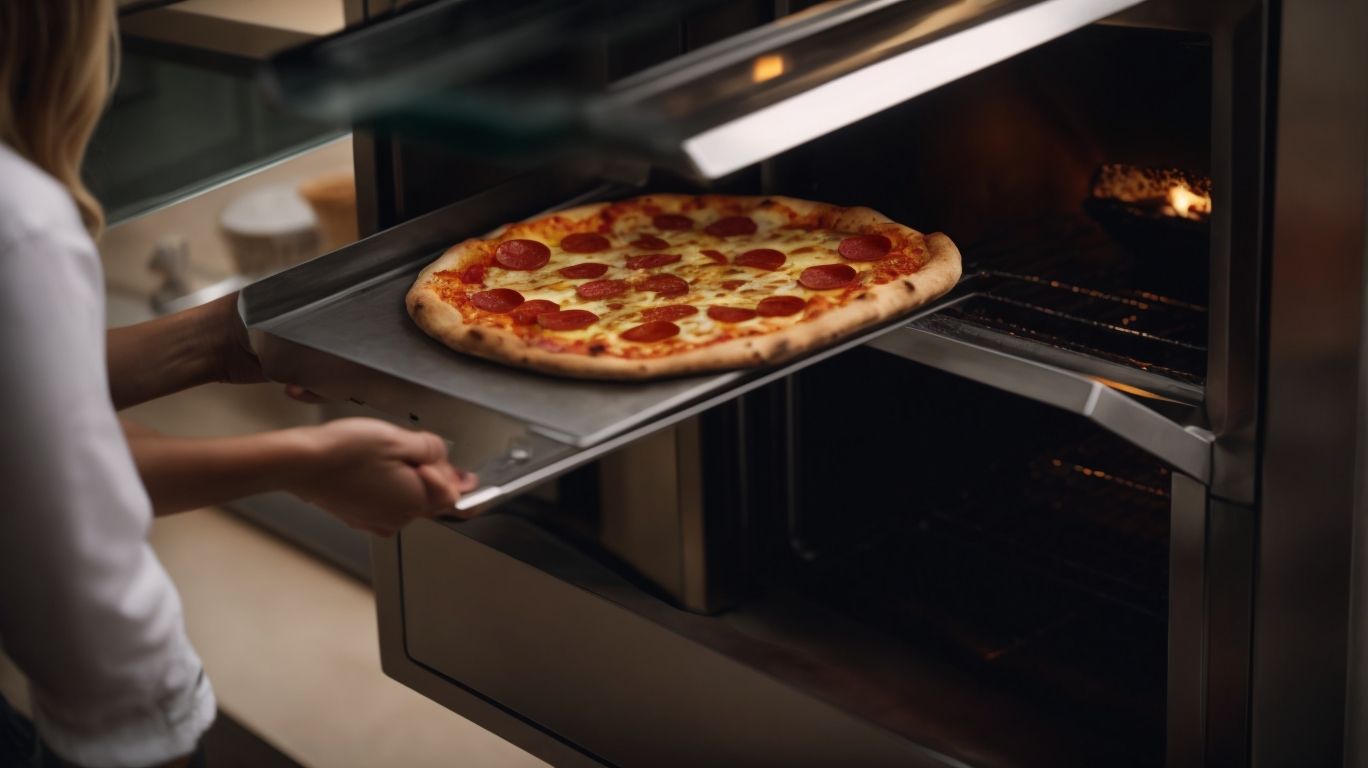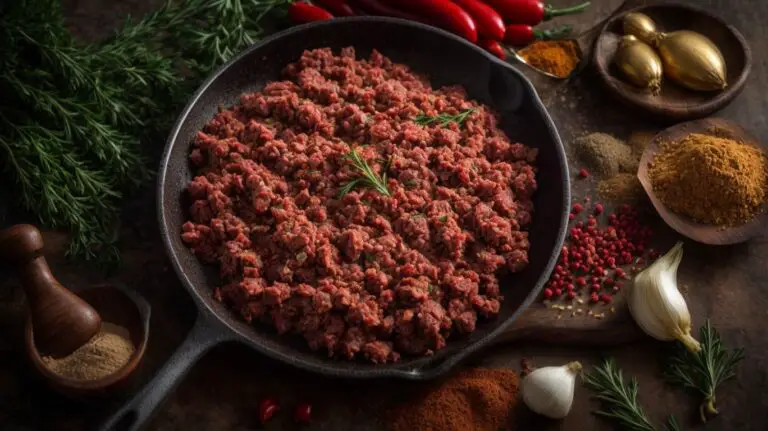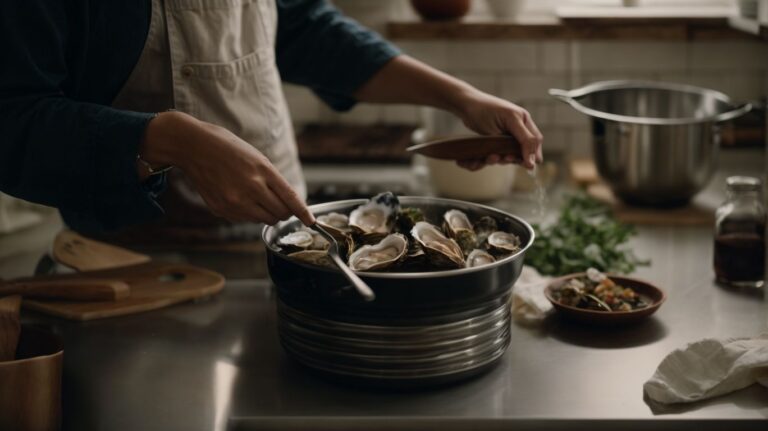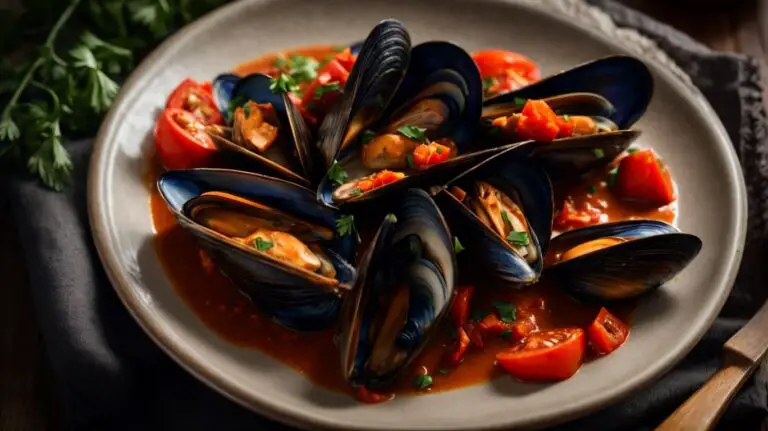How to Cook Pizza in Oven Without Stone?
Are you craving a delicious homemade pizza but don’t have a pizza stone on hand?
Discover alternative methods to achieve that perfect crispy crust and gooey cheese.
We explore what a pizza stone is and how it works, why people use them, and the alternatives available.
Get step-by-step instructions on how to cook pizza in the oven without a stone, along with helpful tips for achieving a perfect pizza every time.
Stay tuned for all the mouth-watering details!
Key Takeaways:
What Is a Pizza Stone and How Does It Work?
A pizza stone is a crucial tool for achieving a crispy crust and even cooking in homemade pizza. It works by absorbing and distributing heat evenly across the dough, mimicking the effects of a traditional brick oven.
The heat retention capacity of a pizza stone helps in creating the ideal environment for baking pizzas. When the dough is placed on the preheated stone, it rapidly absorbs the heat, causing the crust to crisp up quickly at the bottom. This fast initial rise in temperature sets the crust, preventing sogginess.
The porous nature of the stone also allows moisture to escape, keeping the crust crispy and avoiding a soggy base, a common pitfall in pizza-making.
Why Do People Use Pizza Stones?
People use pizza stones to enhance the baking process, ensuring a crispy crust and even heat distribution for a delicious homemade pizza experience.
When placed in an oven, a pizza stone absorbs and retains heat efficiently, creating a stable and high-temperature environment. This feature ensures that your pizza bakes evenly from all sides, producing that coveted golden-brown crust that is crispy on the outside yet tender on the inside. Due to its porous nature, the pizza stone helps absorb excess moisture from the dough, preventing sogginess and resulting in a perfectly cooked base. By mimicking the cooking method used in professional pizzerias, a pizza stone elevates your home pizza-making game to a whole new level.
What Are the Alternatives to Pizza Stones?
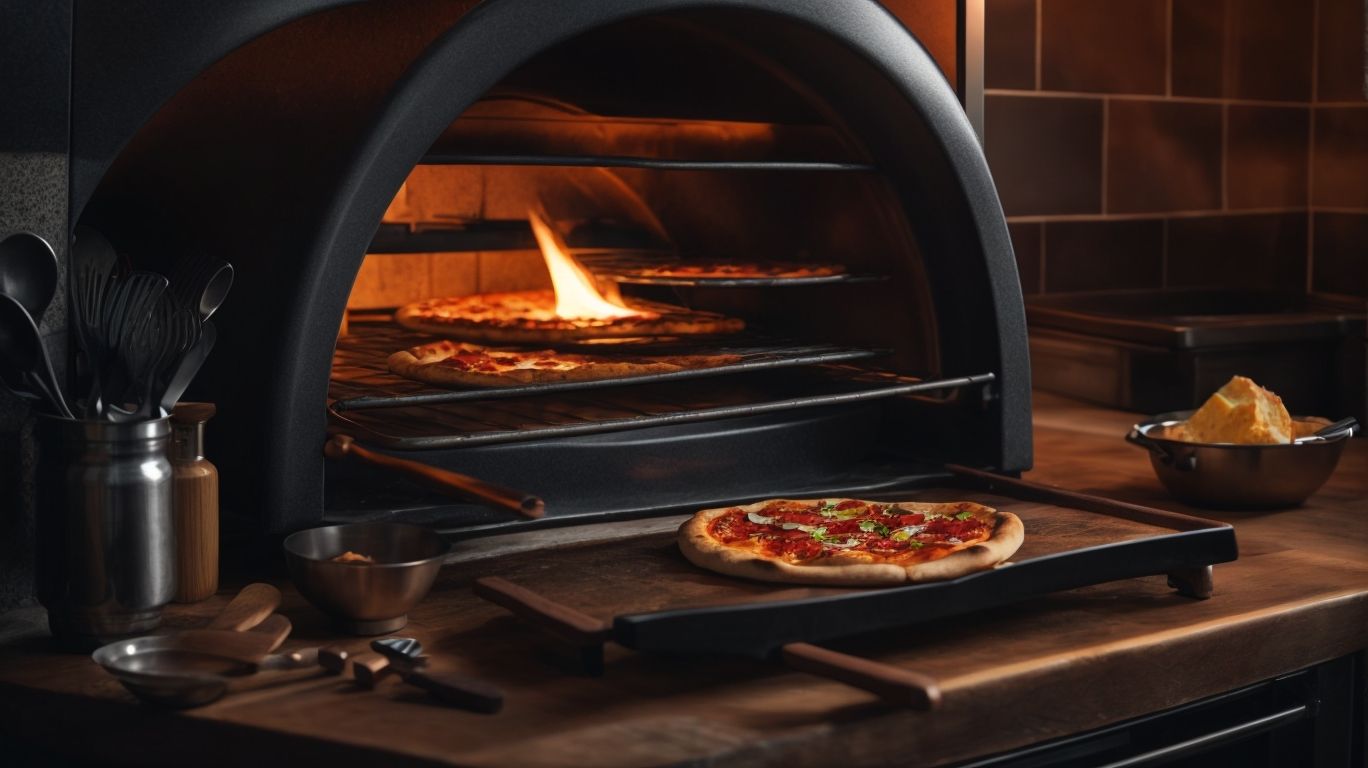
Credits: Poormet.Com – Walter Robinson
If you don’t have a pizza stone on hand, alternatives like a baking sheet, cast iron skillet, or pizza pan can serve as effective substitutes for achieving a delicious homemade pizza.
One popular alternative to a pizza stone is using a baking sheet. The flat surface of a baking sheet allows for even heat distribution, resulting in a crispy crust. It may not retain heat as well as a pizza stone, potentially affecting the overall texture of the pizza.
A cast iron skillet can also be a great substitute. Its heat retention properties help create a beautifully crispy crust, akin to a pizza stone. Yet, the deep skillet sides may hinder proper airflow, impacting the cooking method and potentially yielding a less evenly cooked pizza.
Another option is a pizza pan, specifically designed for pizza making. While it can provide a similar crust texture to a pizza stone, it may not offer the same heat retention capabilities. This can influence the overall taste and consistency of the pizza.
Baking Sheet
A baking sheet is a versatile option for baking homemade pizza in the oven, offering a convenient surface for assembling toppings and ensuring even cooking.
When using a baking sheet as an alternative to a pizza stone, start by preheating your oven to the desired temperature. While the oven heats up, prepare your pizza dough and roll it out on the baking sheet. To prevent sticking, it’s recommended to use parchment paper on the baking sheet.
Placing the toppings strategically is key to ensuring an evenly cooked and flavorful pizza. From the sauce and cheese to assorted toppings, layer them thoughtfully to create a balanced pizza.
Cast Iron Skillet
A cast iron skillet can work wonders for baking pizza, creating a unique crust and locking in flavors as it cooks in the oven.
This versatile cookware is not only great for searing meats or sautéing vegetables but also lends itself perfectly to making delicious, crispy pizzas. When you use a cast iron skillet for pizza, the even heat distribution ensures that the crust cooks uniformly, resulting in a perfectly crisp bottom while maintaining a tender interior.
The high heat retention qualities of the cast iron skillet contribute to a beautifully charred crust, giving you that coveted wood-fired oven taste right at home. The skillet’s substantial weight aids in pressing the dough evenly, allowing for consistency in the thickness of the crust.
Pizza Pan
A pizza pan offers a convenient way to bake delicious pizzas at home, providing a sturdy base for creating crispy crusts and perfectly cooked toppings.
Unlike a pizza stone, which needs to be preheated for an extended period of time, a pizza pan can be used straight out of the cabinet, making it a time-saving option for those impromptu pizza cravings. The flat bottom surface of the pan ensures even heat distribution, resulting in a well-cooked pizza from edge to edge.
When using a pizza pan, you have the freedom to experiment with different crust thicknesses and types as well. Whether you prefer a thin and crispy crust or a thick, fluffy one, the pan accommodates all preferences with ease.
The raised edges of the pan also help keep the toppings in place, preventing them from sliding off during baking. This allows for beautiful and neat topping arrangements, enhancing both the visual appeal and taste of the pizza.
How to Cook Pizza in Oven Without a Stone?
Cooking pizza in the oven without a stone is achievable by following simple steps that ensure a delicious and crispy homemade pizza experience.
Begin by preparing your pizza dough with a combination of flour, yeast, water, salt, and optionally olive oil. Knead the dough until smooth, then let it rise in a warm place for about an hour. Once your dough is ready, preheat your oven to a high temperature to mimic the effects of a pizza stone.
For toppings, choose a variety of ingredients like fresh tomatoes, basil, mozzarella cheese, and pepperoni. Spread a thin layer of tomato sauce over the dough, sprinkle on your chosen toppings, and finish with a generous amount of cheese for that perfect gooey melt.
If you don’t have a pizza stone, consider using a preheated baking sheet or a cast-iron skillet as an alternative surface. These options can help transfer heat evenly to the pizza, ensuring a crispy crust and melting cheese. Keep a close eye on your pizza while it bakes to achieve the desired level of doneness. Once ready, slice and enjoy your delicious homemade pizza!
Preheat Your Oven
Preheating your oven is the first crucial step in preparing to cook pizza without a stone, ensuring that the cooking surface reaches the optimal temperature for a crispy crust.
In terms of preheating, most recipes recommend a temperature of around 450-500 degrees Fahrenheit for pizza. This high heat is essential for achieving that perfect balance of a crispy bottom and perfectly melted cheese. To allow your oven to reach this temperature consistently, it’s advised to preheat for at least 20-30 minutes before placing the pizza inside. This duration ensures that the entire oven, including the walls and racks, absorbs the heat evenly.
Prepare Your Pizza Dough and Toppings
Prepare your pizza dough and toppings thoughtfully, as they form the foundation of a delicious homemade pizza when using alternative cooking surfaces.
When making pizza without a stone, it’s crucial to ensure your dough is properly balanced in terms of texture and elasticity. Use high-quality flour and allow the dough to rise adequately for a light and airy crust.
As for toppings, opt for a variety of flavors and textures to create a well-rounded taste experience. Consider classic combinations like tomato sauce, mozzarella, and basil, or get creative with ingredients like prosciutto, arugula, and truffle oil.
Remember that the key to a successful pizza lies in the careful assembly and distribution of ingredients, ensuring each bite is flavorful and satisfying.
Choose Your Alternative Cooking Surface
Selecting the right alternative cooking surface is essential when baking pizza without a stone, ensuring that the crust cooks evenly and the toppings meld together harmoniously.
One popular option for baking pizza without a stone is a cast iron skillet. This versatile kitchen tool offers excellent heat retention and distribution, resulting in a crispy crust and perfectly cooked toppings. The preheated skillet mimics the effect of a pizza stone, creating a similar texture while enhancing the flavors. Cast iron skillets can also withstand high temperatures, making them suitable for pizzas with various topping combinations.
Place Your Pizza on the Alternative Cooking Surface
Carefully place your prepared pizza on the alternative cooking surface, ensuring that it sits evenly and is ready for a delicious baking experience without a stone.
Once your pizza is positioned on the alternative cooking surface, consider adjusting the toppings strategically to ensure they cook evenly. Place heavier toppings towards the center to prevent them from burning. Make sure the dough is spread out uniformly to avoid undercooked areas. It’s also beneficial to preheat the alternative surface adequately to promote a crispy crust. Take caution when placing the pizza to prevent any toppings from sliding off. Keeping these tips in mind will help you achieve a perfectly cooked pizza on your chosen cooking alternative.
Bake Your Pizza in the Oven
Bake your pizza in the oven without a stone, monitoring the cooking progress to achieve a crispy and flavorful homemade creation.
As your pizza bakes in the oven, keep a close eye on it to ensure it doesn’t overcook or undercook. The ideal baking temperature for a stone-less pizza is typically around 450-500°F (230-260°C). Check the pizza periodically to make any necessary temperature adjustments to avoid burning the crust.
Visual cues can help determine when your pizza is ready. Look for a golden-brown crust and bubbly cheese to signal that it’s time to take it out of the oven. Don’t be afraid to rotate the pizza halfway through baking for even cooking.
Check for Doneness
Check for doneness by inspecting the pizza’s crust, cheese melt, and overall appearance to ensure that your homemade creation is perfectly cooked and ready to enjoy.
One of the most crucial visual cues to gauge the readiness of a pizza is the crust color. A well-cooked pizza should have a golden-brown crust that is slightly crispy to the touch.
When looking at the cheese, observe that it has melted evenly across the top, forming a gooey layer without being overly burnt. Check the toppings – they should be fully cooked and sizzling, enhancing the flavor of each slice.
Trust your senses; a fragrant aroma and the sound of slight sizzling are indicators that your pizza is reaching that perfect state of readiness.
Tips for Cooking a Perfect Pizza Without a Stone
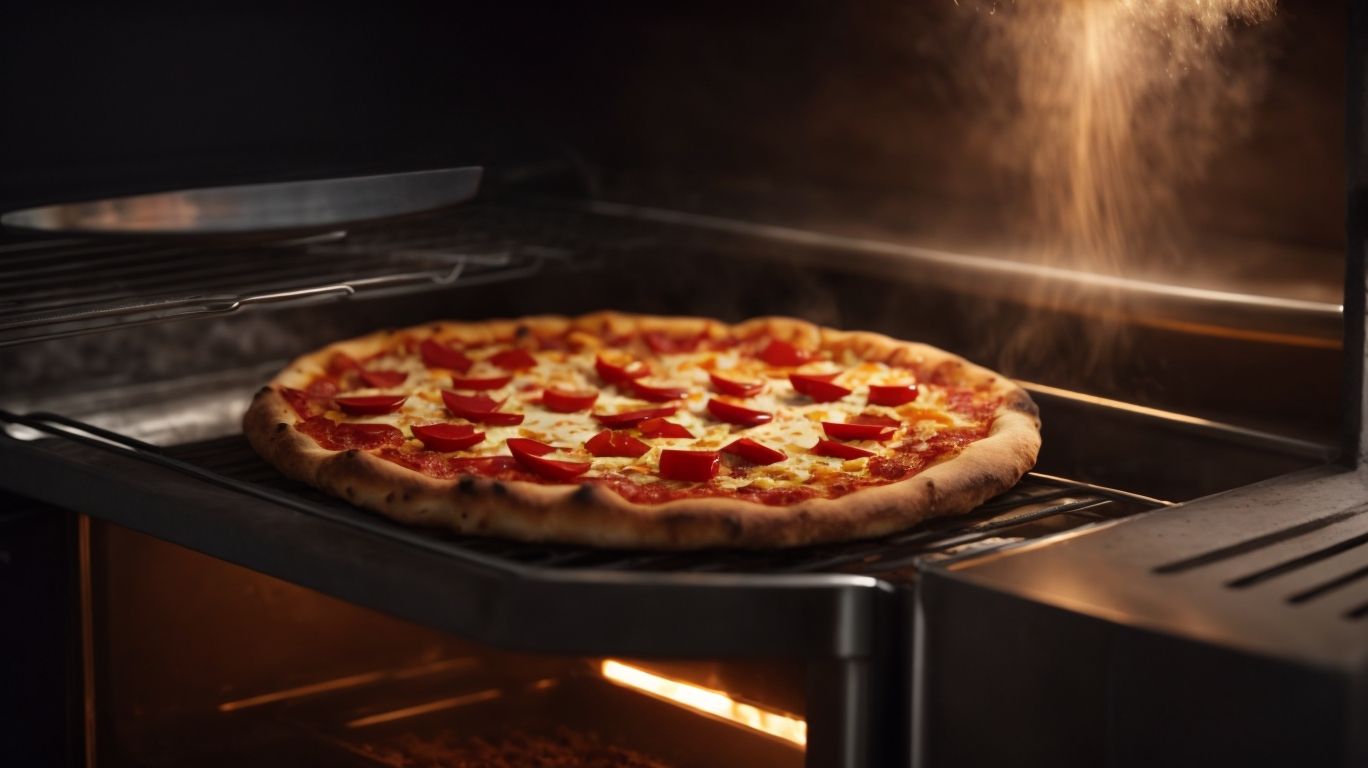
Credits: Poormet.Com – Jesse Smith
Achieving a perfect pizza without a stone requires attention to detail and following key tips, such as using high heat, avoiding overloading, and utilizing parchment paper for optimal results.
In terms of cooking pizza without a stone, high heat is your best friend. Preheat your oven to the highest temperature possible to mimic the intense heat of a traditional pizza oven. This high temperature is crucial for achieving that crispy crust and perfectly melted cheese combination.
Another essential aspect is to balance your ingredients, ensuring you don’t overload your pizza. Remember, less is more when it comes to toppings. Overloading your pizza can lead to a soggy middle and uneven cooking. Keep it balanced with just the right amount of sauce, cheese, and toppings.
To ensure even heat distribution, consider rotating your pizza halfway through the cooking process. This simple step helps prevent hot spots in your oven and ensures that your pizza cooks consistently.
Use High Heat
Employing high heat while baking pizza without a stone is crucial for achieving a crispy and well-cooked crust that enhances the overall flavor and texture of the dish.
When you crank up the heat in your oven for pizza-making, it helps create that perfect balance between a crunchy exterior and a tender inside. The intense heat quickly cooks the dough, ensuring a blistered yet airy crust that is a hallmark of a great pizza.
High temperatures are essential for achieving that coveted cheese melt. The cheese caramelizes beautifully under high heat, creating those irresistible gooey pockets of deliciousness that ooze with every bite.
By opting for a scorching oven, you also significantly reduce the cooking time of your pizza. In just a matter of minutes, your pizza transforms into a culinary masterpiece, ready to be devoured.
Don’t Overload Your Pizza
Resist the temptation to overload your pizza with toppings, as a balanced distribution ensures even cooking and prevents the dough from becoming soggy during baking.
In terms of topping your pizza, remember that less is often more. Start by choosing a few quality ingredients rather than piling on everything in your pantry. A common rule of thumb is to limit yourself to three to four main toppings, ensuring that each bite offers a harmonious blend of flavors. Consider the texture of the toppings as well. Mixing crunchy elements like bell peppers or onions with softer ingredients like mushrooms can create a delightful contrast.
Placement is key when it comes to distributing toppings evenly. After applying the sauce and cheese, scatter your selected toppings strategically, ensuring that they are spread out to avoid overwhelming any one section. This not only enhances the visual appeal of your pizza but also aids in achieving a balanced bite with every slice.
Rotate Your Pizza While Cooking
Enhance cooking consistency by rotating your pizza during the baking process, ensuring that all sides receive even heat distribution for a perfectly cooked homemade creation.
When you rotate the pizza, you are not only preventing uneven cooking but also optimizing the texture of the crust. The key is to rotate the pizza at regular intervals, typically every 5-7 minutes, to guarantee that each part gets its fair share of heat. By doing this, you avoid a scenario where one side of the pizza is overly crisp while the other remains undercooked. Carefully slide a spatula under the pizza to rotate it smoothly, making sure to handle it gently to maintain its shape. This simple action can make a significant difference in the final taste and appearance of your pizza.
Use Parchment Paper
Utilize parchment paper as a convenient tool for baking pizza without a stone, allowing for easy transfer, crisp crusts, and hassle-free cleanup.
When baking pizza without a stone, using parchment paper not only prevents sticking but also helps in enhancing the crust texture by providing a consistent surface for the dough to crisp up evenly.
- For best results, preheat your baking sheet in the oven and then slide the pizza, assembled on parchment paper, onto the hot sheet for a quick and high-temperature bake.
- Placing the parchment paper directly on the oven rack can also aid in getting a nice crispy bottom.
Parchment paper makes the entire baking process much more manageable as it eliminates the need for extra flour or cornmeal to prevent sticking and streamlines the cleanup process post-baking.
Conclusion
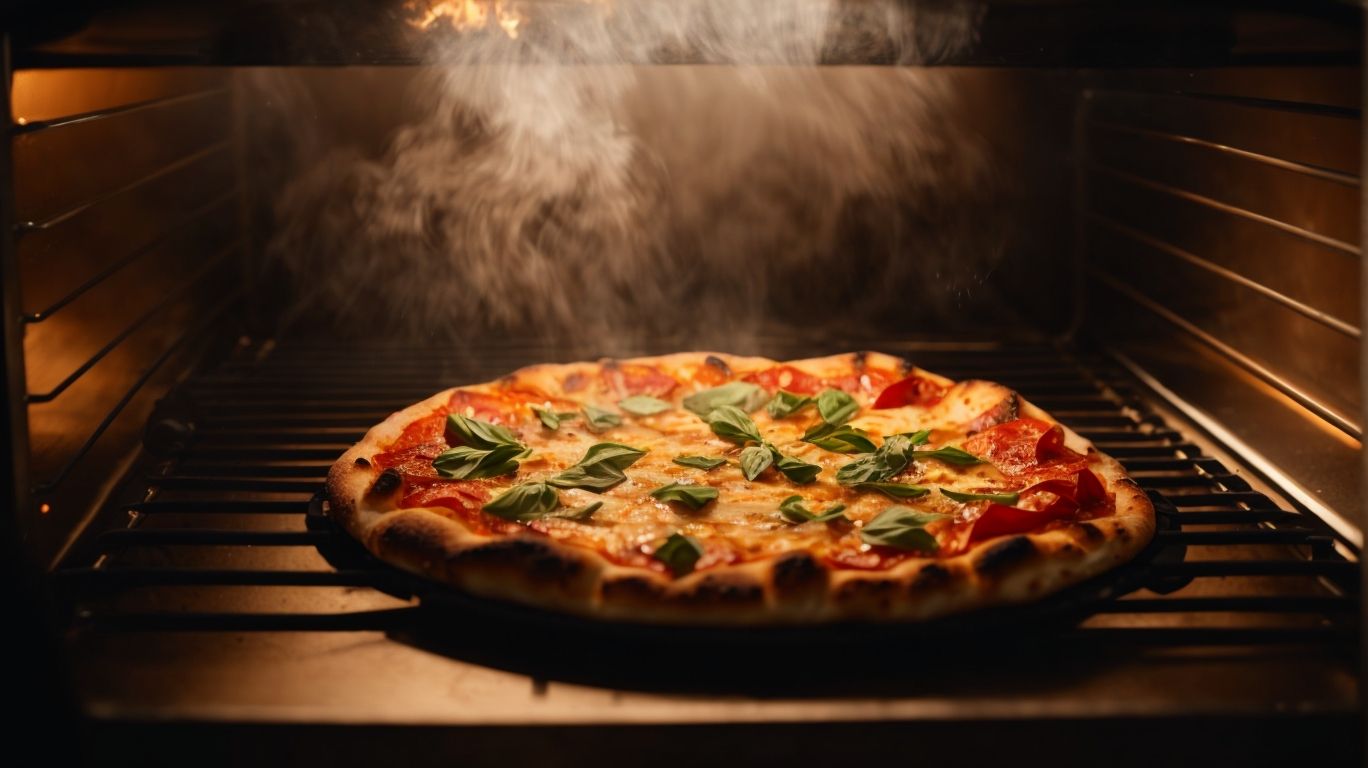
Credits: Poormet.Com – Jacob Hall
Mastering the art of pizza-making without a stone opens up a world of delicious possibilities, allowing you to create homemade pizzas with crispy crusts and delectable toppings.
Baking pizza without a stone can be a rewarding experience, offering the flexibility to experiment with different textures and flavors. By utilizing a pizza pan or a baking sheet, you can achieve similar results to a traditional pizza stone. This method encourages creativity as you can customize your pizza with various ingredients, from classic favorites like pepperoni and mushrooms to more unconventional toppings such as arugula or prosciutto.
Baking pizza without a stone is convenient and cost-effective, as it eliminates the need for specialized equipment and simplifies the cooking process. Whether you prefer a thin and crispy crust or a thick and chewy base, mastering this technique allows you to tailor your pizzas to suit your taste preferences.

